Here at Writing Forward, we’re primarily interested in three types of creative writing: poetry, fiction, and creative nonfiction.
With poetry and fiction, there are techniques and best practices that we can use to inform and shape our writing, but there aren’t many rules beyond the standards of style, grammar, and good writing. We can let our imaginations run wild; everything from nonsense to outrageous fantasy is fair game for bringing our ideas to life when we’re writing fiction and poetry.
However, when writing creative nonfiction, there are some guidelines that we need to follow. These guidelines aren’t set in stone; however, if you violate them, you might find yourself in trouble with your readers as well as the critics.
What is Creative Nonfiction?
What sets creative nonfiction apart from fiction or poetry?
For starters, creative nonfiction is factual. A memoir is not just any story; it’s a true story. A biography is the real account of someone’s life. There is no room in creative nonfiction for fabrication or manipulation of the facts.
So what makes creative nonfiction writing different from something like textbook writing or technical writing? What makes it creative?
Nonfiction writing that isn’t considered creative usually has business or academic applications. Such writing isn’t designed for entertainment or enjoyment. Its sole purpose is to convey information, usually in a dry, straightforward manner.
Creative nonfiction, on the other hand, pays credence to the craft of writing, often through literary devices and storytelling techniques, which make the prose aesthetically pleasing and bring layers of meaning to the context. It’s pleasurable to read.
According to Wikipedia:
Creative nonfiction (also known as literary or narrative nonfiction) is a genre of writing truth which uses literary styles and techniques to create factually accurate narratives. Creative nonfiction contrasts with other nonfiction, such as technical writing or journalism, which is also rooted in accurate fact, but is not primarily written in service to its craft.
Like other forms of nonfiction, creative nonfiction relies on research, facts, and credibility. While opinions may be interjected, and often the work depends on the author’s own memories (as is the case with memoirs and autobiographies), the material must be verifiable and accurately reported.
Creative Nonfiction Genres and Forms
There are many forms and genres within creative nonfiction:
- Memoir
- Autobiography and biography
- Personal essays
- Literary journalism
- Speeches
- Journaling
- Any topical material, such as food or travel writing, self-development, art, or history, can be creatively written with a literary angle
Let’s look more closely at a few of these nonfiction forms and genres:
Memoirs: A memoir is a long-form (book-length) written work. It is a firsthand, personal account that focuses on a specific experience or situation. One might write a memoir about serving in the military or struggling with loss. Memoirs are not life stories, but they do examine life through a particular lens. For example, a memoir about being a writer might begin in childhood, when the author first learned to write. However, the focus of the book would be on writing, so other aspects of the author’s life would be left out, for the most part.
Biographies and autobiographies: A biography is the true story of someone’s life. If an author composes their own biography, then it’s called an autobiography. These works tend to cover the entirety of a person’s life, albeit selectively.
Literary journalism: Journalism sticks with the facts while exploring the who, what, where, when, why, and how of a particular person, topic, or event. Biographies, for example, are a genre of literary journalism, which is a form of nonfiction writing. Traditional journalism is a method of information collection and organization. Literary journalism also conveys facts and information, but it honors the craft of writing by incorporating storytelling techniques and literary devices. Opinions are supposed to be absent in traditional journalism, but they are often found in literary journalism, which can be written in long or short formats.
Personal essays are a short form of creative nonfiction that can cover a wide range of styles, from writing about one’s experiences to expressing one’s personal opinions. They can address any topic imaginable. Personal essays can be found in many places, from magazines and literary journals to blogs and newspapers. They are often a short form of memoir writing.
Speeches can cover a range of genres, from political to motivational to educational. A tributary speech honors someone whereas a roast ridicules them (in good humor). Unlike most other forms of writing, speeches are written to be performed rather than read.
Journaling: A common, accessible, and often personal form of creative nonfiction writing is journaling. A journal can also contain fiction and poetry, but most journals would be considered nonfiction. Some common types of written journals are diaries, gratitude journals, and career journals (or logs), but this is just a small sampling of journaling options.
Any topic or subject matter is fair game in the realm of creative nonfiction. Some nonfiction genres and topics that offer opportunities for creative nonfiction writing include food and travel writing, self-development, art and history, and health and fitness. It’s not so much the topic or subject matter that renders a written work as creative; it’s how it’s written — with due diligence to the craft of writing through application of language and literary devices.
Guidelines for Writing Creative Nonfiction
Here are six simple guidelines to follow when writing creative nonfiction:
- Get your facts straight. It doesn’t matter if you’re writing your own story or someone else’s. If readers, publishers, and the media find out you’ve taken liberties with the truth of what happened, you and your work will be scrutinized. Negative publicity might boost sales, but it will tarnish your reputation; you’ll lose credibility. If you can’t refrain from fabrication, then think about writing fiction instead of creative nonfiction.
- Issue a disclaimer. A lot of nonfiction is written from memory, and we all know that human memory is deeply flawed. It’s almost impossible to recall a conversation word for word. You might forget minor details, like the color of a dress or the make and model of a car. If you aren’t sure about the details but are determined to include them, be upfront and include a disclaimer that clarifies the creative liberties you’ve taken.
- Consider the repercussions. If you’re writing about other people (even if they are secondary figures), you might want to check with them before you publish your nonfiction. Some people are extremely private and don’t want any details of their lives published. Others might request that you leave certain things out, which they want to keep private. Otherwise, make sure you’ve weighed the repercussions of revealing other people’s lives to the world. Relationships have been both strengthened and destroyed as a result of authors publishing the details of other people’s lives.
- Be objective. You don’t need to be overly objective if you’re telling your own, personal story. However, nobody wants to read a highly biased biography. Book reviews for biographies are packed with harsh criticism for authors who didn’t fact-check or provide references and for those who leave out important information or pick and choose which details to include to make the subject look good or bad.
- Pay attention to language. You’re not writing a textbook, so make full use of language, literary devices, and storytelling techniques.
- Know your audience. Creative nonfiction sells, but you must have an interested audience. A memoir about an ordinary person’s first year of college isn’t especially interesting. Who’s going to read it? However, a memoir about someone with a learning disability navigating the first year of college is quite compelling, and there’s an identifiable audience for it. When writing creative nonfiction, a clearly defined audience is essential.
Are you looking for inspiration?
Check out these creative nonfiction writing ideas.
Ten Creative Nonfiction Writing Prompts and Projects
The prompts below are excerpted from my book, 1200 Creative Writing Prompts, which contains fiction, poetry, and creative nonfiction writing prompts. Use these prompts to spark a creative nonfiction writing session.
- What is your favorite season? What do you like about it? Write a descriptive essay about it.
- What do you think the world of technology will look like in ten years? Twenty? What kind of computers, phones, and other devices will we use? Will technology improve travel? Health care? What do you expect will happen and what would you like to happen?
- Have you ever fixed something that was broken? Ever solved a computer problem on your own? Write an article about how to fix something or solve some problem.
- Have you ever had a run-in with the police? What happened?
- Have you ever traveled alone? Tell your story. Where did you go? Why? What happened?
- Let’s say you write a weekly advice column. Choose the topic you’d offer advice on, and then write one week’s column.
- Think of a major worldwide problem: for example, hunger, climate change, or political corruption. Write an article outlining a solution (or steps toward a solution).
- Choose a cause that you feel is worthy and write an article persuading others to join that cause.
- Someone you barely know asks you to recommend a book. What do you recommend and why?
- Hard skills are abilities you have acquired, such as using software, analyzing numbers, and cooking. Choose a hard skill you’ve mastered and write an article about how this skill is beneficial using your own life experiences as examples.
Do You Write Creative Nonfiction?
Have you ever written creative nonfiction? How often do you read it? Can you think of any nonfiction forms and genres that aren’t included here? Do you have any guidelines to add to this list? Are there any situations in which it would be acceptable to ignore these guidelines? Got any tips to add? Do you feel that nonfiction should focus on content and not on craft? Leave a comment to share your thoughts, and keep writing.


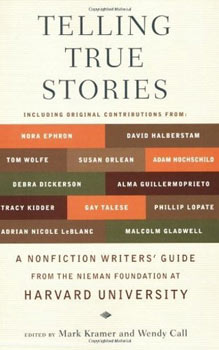
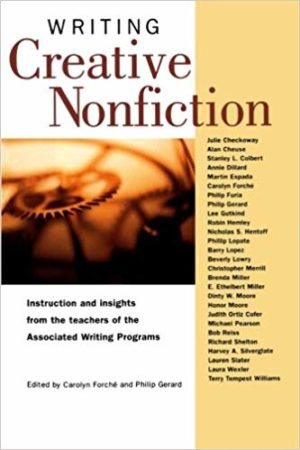
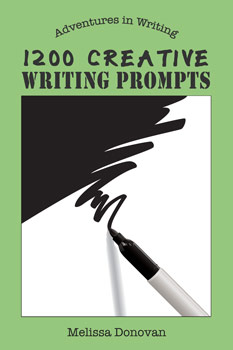
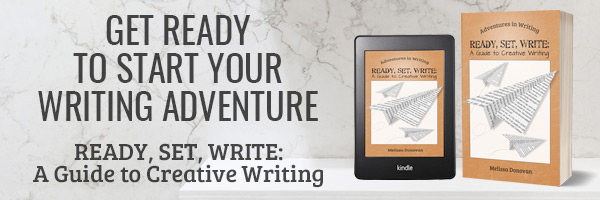

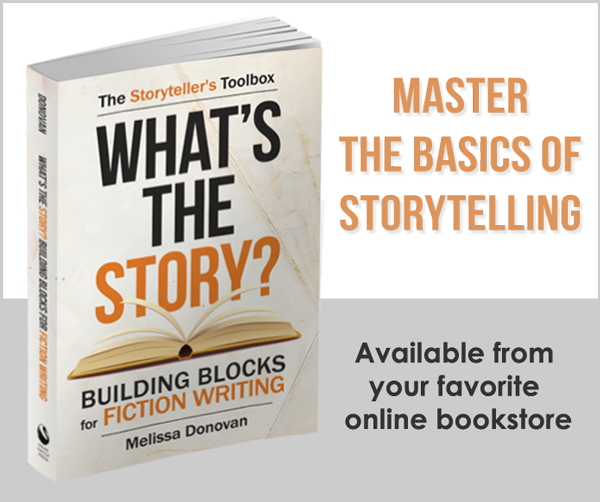

Shouldn’t ALL non-fiction be creative to some extent? I am a former business journalist, and won awards for the imaginative approach I took to writing about even the driest of business topics: pensions, venture capital, tax, employment law and other potentially dusty subjects.
The drier and more complicated the topic, the more creative the approach must be, otherwise no-one with anything else to do will bother to wade through it. [to be honest, taking the fictional approach to these ghastly tortuous topics was the only way I could face writing about them.]
I used all the techniques that fiction writers have to play with, and used some poetic techniques, too, to make the prose more readable. What won the first award was a little serial about two businesses run and owned by a large family at war with itself. Every episode centred on one or two common and crucial business issues, wrapped up in a comedy-drama, and it won a lot of fans (happily for me) because it was so much easier to read and understand than the dry technical writing they were used to. Life’s too short for dusty writing!
I believe most journalism is creative and would therefore fall under creative nonfiction. However, there is a lot of legal, technical, medical, science, and textbook writing in which there is no room for creativity (or creativity has not made its way into these genres yet). With some forms, it makes sense. I don’t think it would be appropriate for legal briefings to use story or literary devices just to add a little flair. On the other hand, it would be a good thing if textbooks were a little more readable.
I think Abbs is right – even in academic papers, an example or story helps the reader visualize the problem or explanation more easily. I scan business books to see if there are stories or examples, if not, then I don’t pick up the book. That’s where the creativity comes in – how to create examples, what to conflate, what to emphasis as we create our fictional people to illustrate important, real points.
Thanks for the post. Very helpful. I’d never thought about writing creative nonfiction before.
You’re welcome 🙂
I have a question. We have loved in East Africa as expats and have had great experiences. I have finished writing a book completely made up of real incidents that happened to us when we were there. But the family members undergoing the events are fictionalised. (Their characters , their relationships and a few events that happens to them) Can the book be categorised as creative non-fiction?
Hi Melissa!
Love your website. You always give a fun and frank assessment of all things pertaining to writing. It is a pleasure to read. I have even bought several of the reference and writing books you recommended. Keep up the great work.
Steve
Top 10 Reasons Why Creative Nonfiction Is A Questionable Category
10. When you look up “Creative Nonfiction” in the dictionary it reads: See Fiction
9. The first creative nonfiction example was a Schwinn Bicycle Assembly Guide that had printed in its instructions: Can easily be assembled by one person with a Phillips head screw driver, Allen keys, adjustable wrench and cable cutters in less than an hour.
8. Creative Nonfiction; Based on actual events; Suggested by a true event; Based on a true story. It’s a slippery slope.
7. The Creative Nonfiction Quarterly is only read by eleven people. Five have the same last name.
6. Creative Nonfiction settings may only include: hospitals, concentration camps, prisons and cemeteries. Exceptions may be made for asylums, rehab centers and Capitol Hill.
5. The writers who create Sterile Nonfiction or Unimaginative Nonfiction now want their category recognized.
4. Creative; Poetic License; Embellishment; Puffery. See where this is leading?
3. Creative Nonfiction is to Nonfiction as Reality TV is to Documentaries.
2. My attorney has advised that I exercise my 5th Amendment Rights or that I be allowed to give written testimony in a creative nonfiction way.
1. People believe it is a film with Will Ferrell, Emma Thompson and Queen Latifa.
Hi Steve. I’m not sure if your comment is meant to be taken tongue-in-cheek, but I found it humorous.
My publisher is releasing my Creative Nonfiction book based on my grandmother’s life this May 2019 in Waikiki. I’ll give you an update soon about sales. I was fortunate enough to get some of the original and current Hawaii 5-0 members to show up for the book signing.
Hi, when writing creative nonfiction- is it appropriate to write from someone else’s point of view when you don’t know them? I was thinking of writing about Greta Thungbrurg for creative nonfiction competition – but I can directly ask her questions so I’m unsure as to whether it’s accurate enough to be classified as creative non-fiction. Thank you!
Hi Madeleine. I’m not aware of creative nonfiction being written in first person from someone else’s point of view. The fact of the matter is that it wouldn’t be creative nonfiction because a person cannot truly show events from another person’s perspective. So I wouldn’t consider something like that nonfiction. It would usually be a biography written in third person, and that is common. You can certainly use quotes and other indicators to represent someone else’s views and experiences. I could probably be more specific if I knew what kind of work it is (memoir, biography, self-development, etc.).
Dear Melissa: I am trying to market a book in the metaphysical genre about an experience I had, receiving the voice of a Civil War spirit who tells his story (not channeling). Part is my reaction and discussion with a close friend so it is not just memoir. I referred to it as ‘literary non-fiction’ but an agent put this down by saying it is NOT literary non-fiction. Looking at your post, could I say that my book is ‘creative non-fiction’? (agents can sometimes be so nit-picky)
Hi Liz. You opened your comment by classifying the book as metaphysical but later referred to it as literary nonfiction. The premise definitely sounds like a better fit in the metaphysical category. Creative nonfiction is not a genre; it’s a broader category or description. Basically, all literature is either fiction or nonfiction (poetry would be separate from these). Describing nonfiction as creative only indicates that it’s not something like a user guide. I think you were heading in the right direction with the metaphysical classification.
The goal of marketing and labeling books with genres is to find a readership that will be interested in the work. This is an agent’s area of expertise, so assuming you’re speaking with a competent agent, I’d suggest taking their advice in this matter. It indicates that the audience perusing the literary nonfiction aisles is simply not a match for this book.